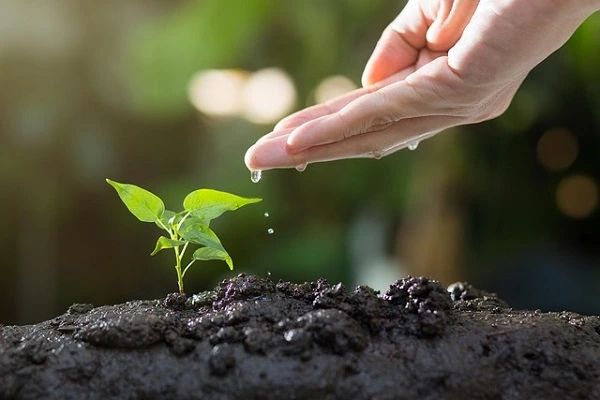Vertical hydroponic gardening is a great way to grow plants in limited space. It uses a soilless system, where plants grow on stacked layers. This setup is perfect for small spaces, like apartments or rooftops. However, for your plants to thrive, temperature and humidity need to be closely monitored.
In hydroponics, maintaining the right temperature helps plants absorb nutrients better and grow faster. When it’s too hot or too cold, plants can struggle. The ideal temperature is between 65°F and 75°F (18°C to 24°C) during the day and slightly cooler at night.
Humidity also plays a big role. Too much moisture can lead to mold, while too little can cause plants to wilt. The best range is between 50% and 70%. Keeping track of both temperature and humidity will help you grow healthy, thriving plants all year long, no matter the conditions outside. With the right care, you can enjoy vibrant plants with fresh, home-grown crops all the time.
The Role of Temperature and Humidity in Hydroponics
Temperature is key to plant growth in hydroponics. It affects metabolism and nutrient uptake. If it’s too hot, plants use up energy quickly. If it’s too cold, their growth slows down. The right temperature helps plants absorb nutrients more efficiently. This is crucial for healthy, fast-growing plants.
Plants also need a consistent temperature. Daytime temperatures should range between 65°F and 75°F (18°C to 24°C). At night, it’s best to have it a bit cooler. This helps with the plant’s natural growth cycle.
Humidity plays an important role, too. It helps with transpiration, where plants release water. This process moves nutrients through the plant. If humidity is too high, plants might struggle to absorb nutrients. If it’s too low, they may lose water too quickly.
The ideal humidity for most plants is between 50% and 70%. Too much moisture in the air can cause mold or mildew. Too little can stress the plants. Keep humidity levels steady to support strong, healthy growth.
Both temperature and humidity work together to help plants thrive. By keeping them in the right range, your hydroponic garden will flourish.
Best Practices for Controlling Temperature
Maintaining the right temperature is crucial for plant health in your vertical hydroponic garden. Here are some tips to keep things just right.
First, be mindful of day and night temperature changes. During the day, aim for 65°F to 75°F (18°C to 24°C). At night, you can lower the temperature a few degrees. This helps your plants grow naturally. A temperature drop at night mimics the plant’s natural cycle.
Proper insulation can also make a big difference. Insulating the walls of your garden helps keep the temperature steady. It prevents the heat from escaping or getting too hot. This is especially useful if your garden is in a room with fluctuating temperatures.
Ventilation is another key factor. Airflow helps maintain a stable temperature. It prevents heat from building up, especially under grow lights. Use fans to circulate air around the plants. This will keep the temperature consistent.
For extra control, consider using heat mats or fans. Heat mats provide warmth to the roots, while fans circulate air to cool things down. Both can help balance the temperature within your garden.
Automated solutions can make temperature control easier. Thermostats can regulate the air temperature automatically. You can also invest in climate control systems to monitor both temperature and humidity. These systems ensure a consistent environment without much effort on your part.
Changing temperatures with the seasons can be a challenge. During winter, you may need extra heating, while in summer, cooling may be necessary. Using space heaters in colder months or cooling fans during the warmer months can help. Don’t forget to check your plants regularly to make sure they’re comfortable.
By following these practices, you’ll be able to maintain a stable and healthy environment for your hydroponic garden.
Best Practices for Controlling Humidity
Regulating humidity is just as important as controlling temperature in your hydroponic garden. The right humidity level helps plants absorb nutrients and water properly. Too much moisture can lead to mold, while too little can stress your plants.
The ideal humidity range for most plants is between 50% and 70%. This balance supports healthy growth without causing issues. If humidity is too high, plants can suffocate. If it’s too low, they may struggle to take in water and nutrients.
One way to control humidity is by using a humidifier. This can add moisture to the air when it’s too dry. On the other hand, if the air is too damp, a dehumidifier can help remove excess moisture. These devices give you more control over the environment.
Good airflow is also crucial. Stale air can cause humidity to build up in one area. Use fans to circulate the air around your garden. This helps maintain a steady humidity level and prevents mold from forming.
To monitor your humidity levels, invest in a hygrometer or a sensor. These tools give you accurate readings of the air’s moisture content. With real-time data, you can make adjustments as needed. Many modern sensors connect to apps, allowing you to check humidity levels from anywhere.
Regularly check humidity to keep it within the ideal range. If you notice any issues, act quickly. A small change can have a big impact on plant health.
By using these methods, you’ll create a stable environment for your hydroponic plants. Proper humidity control supports strong, healthy growth and ensures your garden thrives.
Using Technology for Temperature and Humidity Control
Smart technology can make managing temperature and humidity much easier in your hydroponic garden. With devices like thermostats, sensors, and climate control systems, you can keep the environment perfect for your plants.
Thermostats help maintain the right temperature by adjusting the heat or cooling automatically. They can be set to specific temperatures, so you don’t have to worry about manual changes. You’ll know your plants are always in the ideal range.
Humidity sensors are another useful tool. They measure the moisture level in the air and alert you if it’s too high or low. Some models even connect to your phone or smart devices. This way, you can monitor your garden from anywhere.
Climate control systems go a step further. They can control both temperature and humidity at the same time. Some systems adjust automatically based on the conditions in your garden. This takes a lot of the guesswork out of gardening.
The biggest advantage of using these technologies is real-time data. You’ll always know the exact conditions in your garden. This makes it easier to spot any issues early and fix them before they affect your plants.
With these tools, managing your garden becomes much simpler. You can focus more on your plants and less on adjusting the environment. Technology makes it easy to keep your hydroponic garden thriving, no matter the conditions.
Troubleshooting Common Temperature and Humidity Issues
It’s important to watch for signs of temperature and humidity problems in your hydroponic garden. If your plants are wilting, it may be a sign that the temperature is too high or too low. On the other hand, stunted growth often indicates that the temperature is not optimal for your plants. If you notice mold or mildew, it’s likely that the humidity is too high.
To fix temperature issues, check your ventilation. Poor airflow can cause heat to build up. Make sure fans are circulating air well. If the temperature fluctuates too much, consider using a thermostat to stabilize it.
If humidity is the problem, adjust your humidifier or dehumidifier. For high humidity, a dehumidifier can help remove excess moisture. If it’s too low, a humidifier will add the moisture needed. Keep humidity levels between 50% and 70% for the best results.
Another common issue is uneven temperatures, especially during the night. To fix this, try using heat mats under your plants or adjusting the light cycle. This can help maintain consistent warmth during the night.
Keep monitoring your plants and environment. If the leaves are yellowing or curling, it could be a sign that the temperature or humidity is off. Adjusting the settings or devices in your garden can help correct the issue quickly.
By watching for these signs and making small changes, you can keep your plants healthy and thriving. It’s all about finding the right balance and making adjustments as needed.
Conclusion
Maintaining the right temperature and humidity is essential for a successful vertical hydroponic garden. Both factors directly affect plant growth, nutrient uptake, and overall health. Without proper control, plants can suffer from stunted growth, wilting, or even disease.
First, keep the temperature between 65°F and 75°F (18°C to 24°C) during the day, and slightly cooler at night. This range helps plants grow at their best. Too high or low a temperature can stress them and slow down their development. Insulation and proper ventilation can help maintain a stable environment.
Humidity is just as important. Keep it between 50% and 70% for most plants. Too much moisture can lead to mold, while too little will cause plants to struggle with nutrient absorption. Using humidifiers, dehumidifiers, and ensuring good airflow will help keep humidity in check.
Technology can make managing temperature and humidity much easier. With smart thermostats, sensors, and climate control systems, you can monitor and adjust conditions without much effort. These tools provide real-time data, making it simple to maintain the ideal environment.
Remember, it’s important to regularly check your garden’s conditions. A simple change in temperature or humidity can have a big impact. By staying on top of these factors, you’ll be able to create the best environment for your plants. This leads to healthier, stronger plants and better growth.
With a little attention and care, your hydroponic garden can thrive. Whether you’re growing herbs, greens, or other plants, maintaining stable conditions will support healthy growth and give you great results. Keep monitoring, adjusting, and enjoying the process. Your plants will thank you!




